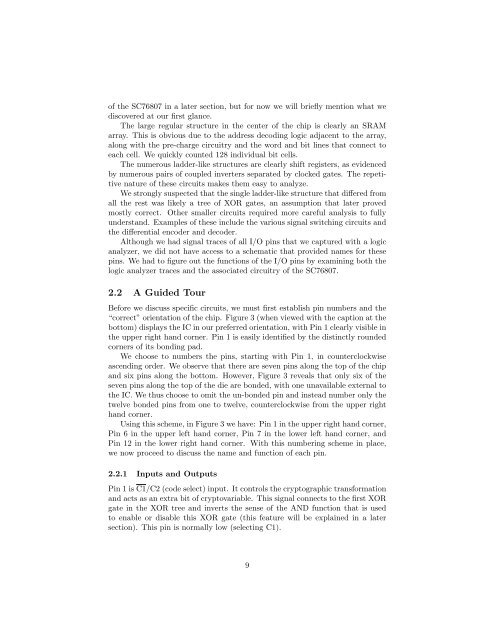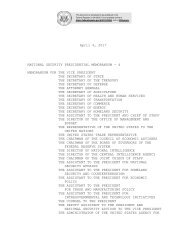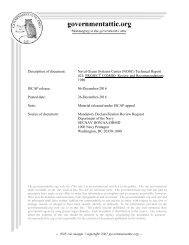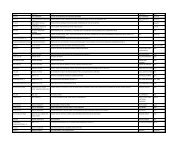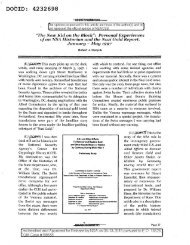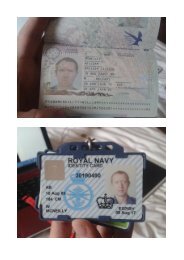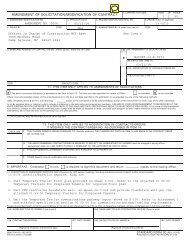vulcan-cryptanalysis
vulcan-cryptanalysis
vulcan-cryptanalysis
You also want an ePaper? Increase the reach of your titles
YUMPU automatically turns print PDFs into web optimized ePapers that Google loves.
of the SC76807 in a later section, but for now we will briefly mention what we<br />
discovered at our first glance.<br />
The large regular structure in the center of the chip is clearly an SRAM<br />
array. This is obvious due to the address decoding logic adjacent to the array,<br />
along with the pre-charge circuitry and the word and bit lines that connect to<br />
each cell. We quickly counted 128 individual bit cells.<br />
The numerous ladder-like structures are clearly shift registers, as evidenced<br />
by numerous pairs of coupled inverters separated by clocked gates. The repetitive<br />
nature of these circuits makes them easy to analyze.<br />
We strongly suspected that the single ladder-like structure that differed from<br />
all the rest was likely a tree of XOR gates, an assumption that later proved<br />
mostly correct. Other smaller circuits required more careful analysis to fully<br />
understand. Examples of these include the various signal switching circuits and<br />
the differential encoder and decoder.<br />
Although we had signal traces of all I/O pins that we captured with a logic<br />
analyzer, we did not have access to a schematic that provided names for these<br />
pins. We had to figure out the functions of the I/O pins by examining both the<br />
logic analyzer traces and the associated circuitry of the SC76807.<br />
2.2 A Guided Tour<br />
Before we discuss specific circuits, we must first establish pin numbers and the<br />
“correct” orientation of the chip. Figure 3 (when viewed with the caption at the<br />
bottom) displays the IC in our preferred orientation, with Pin 1 clearly visible in<br />
the upper right hand corner. Pin 1 is easily identified by the distinctly rounded<br />
corners of its bonding pad.<br />
We choose to numbers the pins, starting with Pin 1, in counterclockwise<br />
ascending order. We observe that there are seven pins along the top of the chip<br />
and six pins along the bottom. However, Figure 3 reveals that only six of the<br />
seven pins along the top of the die are bonded, with one unavailable external to<br />
the IC. We thus choose to omit the un-bonded pin and instead number only the<br />
twelve bonded pins from one to twelve, counterclockwise from the upper right<br />
hand corner.<br />
Using this scheme, in Figure 3 we have: Pin 1 in the upper right hand corner,<br />
Pin 6 in the upper left hand corner, Pin 7 in the lower left hand corner, and<br />
Pin 12 in the lower right hand corner. With this numbering scheme in place,<br />
we now proceed to discuss the name and function of each pin.<br />
2.2.1 Inputs and Outputs<br />
Pin 1 is C1/C2 (code select) input. It controls the cryptographic transformation<br />
and acts as an extra bit of cryptovariable. This signal connects to the first XOR<br />
gate in the XOR tree and inverts the sense of the AND function that is used<br />
to enable or disable this XOR gate (this feature will be explained in a later<br />
section). This pin is normally low (selecting C1).<br />
9


